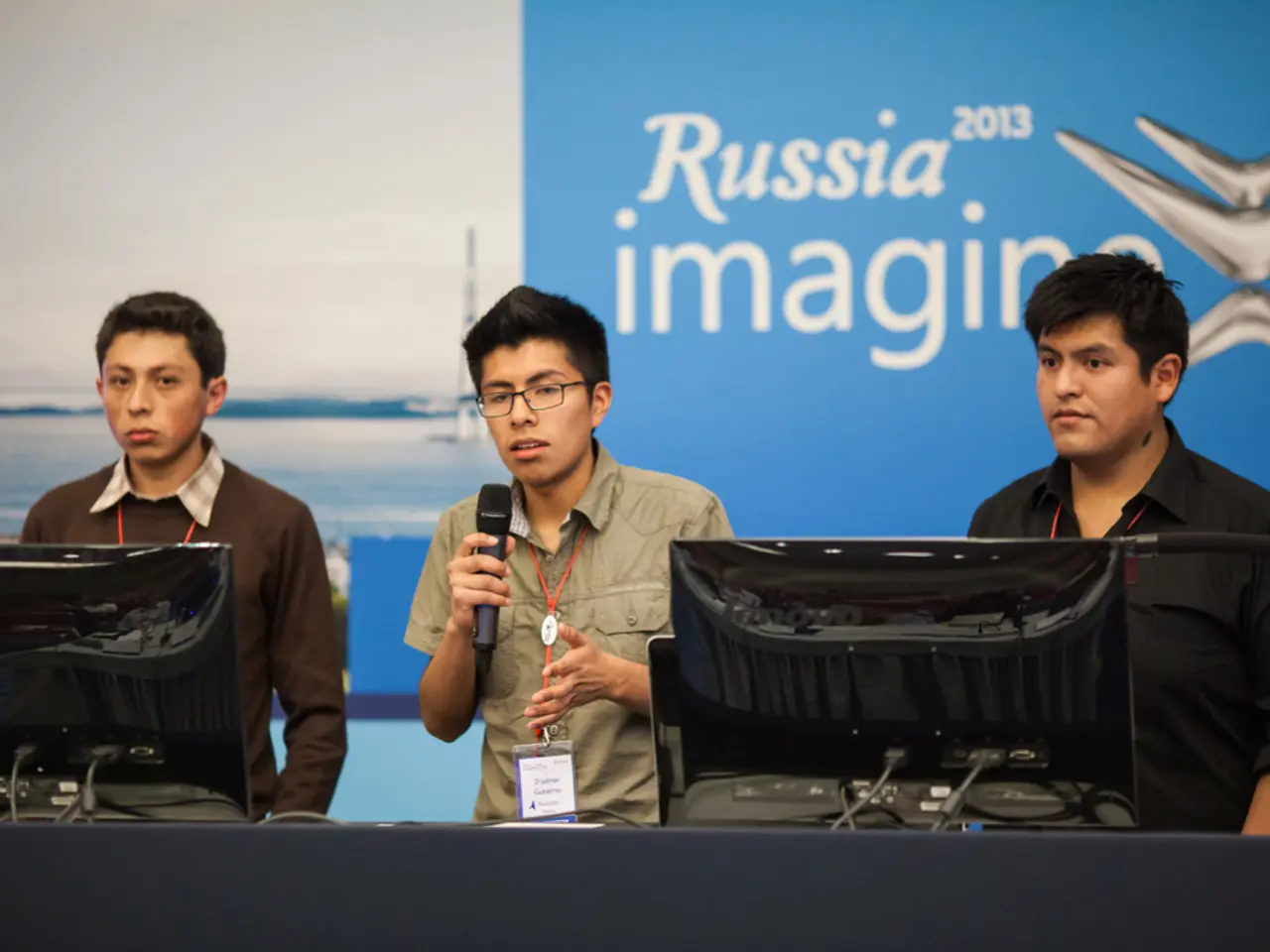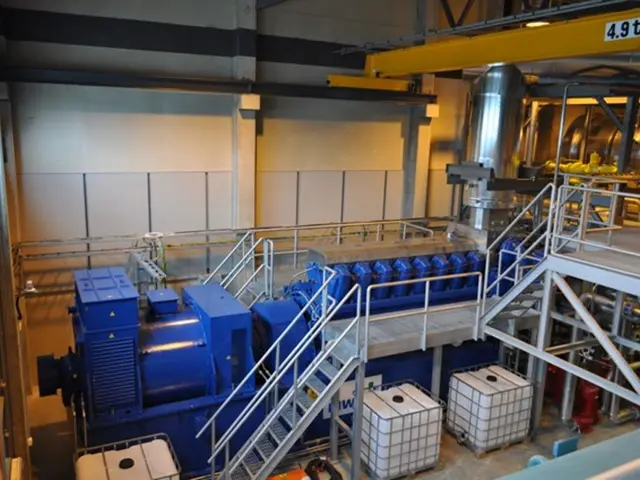Artificial Intelligence Age Labor Shift: The Emerging Workforce Revolution
In today's rapidly evolving digital landscape, unions are playing a crucial role in shaping the future of work. They are adapting their strategies to ensure workers can thrive alongside technology, balancing competitiveness with protecting employee interests.
Proactive Bargaining for AI Implementation
Unions are proactively engaging in collective bargaining to shape AI implementation. They are negotiating agreements that limit or regulate AI and generative AI (GAI) use, requiring advance notice and consultation before AI deployment [1][3]. This ensures workers have a say in how technology is integrated into their workplaces.
Reskilling for AI Collaboration
Recognizing the need for employees to be prepared for hybrid roles where humans work alongside digital co-workers, unions are advocating for training programs to reskill workers for AI collaboration [2][4]. This includes ensuring employees are equipped with the necessary digital skills to collaborate effectively with AI tools.
Addressing Potential Job Losses
Unions are also addressing potential job losses due to automation. They are seeking collective bargaining provisions that address these issues, including severance negotiations and effects bargaining exclusions tied to automation-related workforce reductions [1].
Collaborative Frameworks for AI Adoption
Unions are calling for the establishment of joint committees or strategic frameworks between employers and unions to set clear principles and rules around AI adoption, use, monitoring, and its impact on worker rights, privacy, and safety [1][3]. This collaborative approach ensures that all parties are working towards a common goal: a fair and safe transition to AI-enhanced workplaces.
Continuous Dialogue for AI Governance
Emphasizing the importance of continuous dialogue, unions are stressing the need for ongoing discussions between unions and employers to update AI governance as technology evolves [3]. This ensures that the evolving needs of workers are always at the forefront of AI implementation decisions.
Data Rights and Privacy Protections
In addition to these efforts, unions are establishing data rights and privacy protections, including clear boundaries on what employee data can be collected and how it can be used [5]. This helps to ensure that workers' personal information is protected in the digital age.
Upskilling Initiatives for At-Risk Workers
Progressive unions are developing targeted upskilling programs for members most at risk of displacement, including older workers, those with limited formal education, and workers in heavily automatable roles [6]. This proactive approach aims to mitigate the adverse impacts of automation on these vulnerable groups.
The Future of Labor Rights in a Digital Age
The relationship between technology and labor rights is undergoing a pivotal change as artificial intelligence transforms industries. Unions are advocating for universal broadband access, community-based digital skills programs, technology access initiatives for underserved populations, and public library modernization as digital learning centers [7].
The Importance of Worker Involvement in Technological Transition
Evidence suggests that worker involvement in technological transition delivers better outcomes for both labor and management, including higher adoption rates, lower turnover, more process improvement suggestions, and higher customer satisfaction scores [8]. This underscores the importance of unions in ensuring workers have a voice in the technological changes that affect their lives and livelihoods.
In conclusion, unions are not just resisting or limiting the adverse impacts of automation; they are actively facilitating training, reskilling, and adaptation to new technology-driven work environments [2]. As we navigate this digital age, unions will continue to play a vital role in ensuring a fair and equitable transition for all workers.
[1] The Future of Work: A Summit on AI and Automation [2] Unions and AI: A New Era for Worker Representation [3] Unions and AI: A Primer for Union Leaders [4] Unions and AI: A Guide for Union Reps [5] Unions and Data: The Power of Collective Bargaining [6] Unions and Automation: A Strategy for Worker Protection [7] Unions and Technology: A New Agenda for Worker Advocacy [8] The Impact of Worker Involvement on Technological Transition
Unions are actively shaping the governance of AI implementation by proactively engaging in collective bargaining [1]. They are reskilling workers to collaborate effectively with AI technology [2]. To address potential job losses, unions are negotiating provisions for severance negotiations and effects bargaining exclusions tied to automation-related workforce reductions [1]. Recognizing the importance of continuous dialogue, unions are stressing the need for ongoing discussions to update AI governance as technology evolves [3].
To ensure a fair and safe transition to AI-enhanced workplaces, unions are advocating for the establishment of joint committees or strategic frameworks between employers and unions [1][3]. They are developing targeted upskilling programs for members most at risk of displacement [6]. In the digital age, unions are advocating for universal broadband access, community-based digital skills programs, technology access initiatives for underserved populations, and public library modernization as digital learning centers [7].
Unions understand that worker involvement in technological transition delivers better outcomes for both labor and management [8]. They believe that worker participation is crucial in navigating the digital age and ensuring a fair and equitable transition for all workers. Unions are not just resisting the adverse impacts of automation; they are actively facilitating training, reskilling, and adaptation to new technology-driven work environments [2].




